Global E-Learning Market - Comprehensive Data-Driven Market Analysis & Strategic Outlook
The global E-Learning market has revolutionized the education sector by altering the way knowledge is being accessed, shared, and consumed. Its origin started slowly in the latter half of the twentieth century, when the internet was yet in its experimental phase and universities initially dipped their toes in online modules as support components of traditional classrooms. What was initially a tool for facilitating distant learners eventually evolved into a cornerstone of adaptable education systems worldwide. The early 2000s were the first turning point since high-speed internet networks and multimedia integration facilitated the offering of interactive lessons rather than static text materials.
- Global E-Learning market worth around USD 348.8 Billion in 2025, growing at around 14.8% CAGR between the years 2032, with chances of growing to USD 916.8 Billion.
- Content Provider maintain nearly 44.3% market share, driving innovation and widening uses through aggressive research.
- Drivers for growth are: Rising Demand for Distance Learning, Innovation in Learning Platforms technology
- Key opportunities are: Growing Adoption of Mobile Learning Solutions
- Key point: The market will grow exponentially in value in the coming decade, with high growth potential.
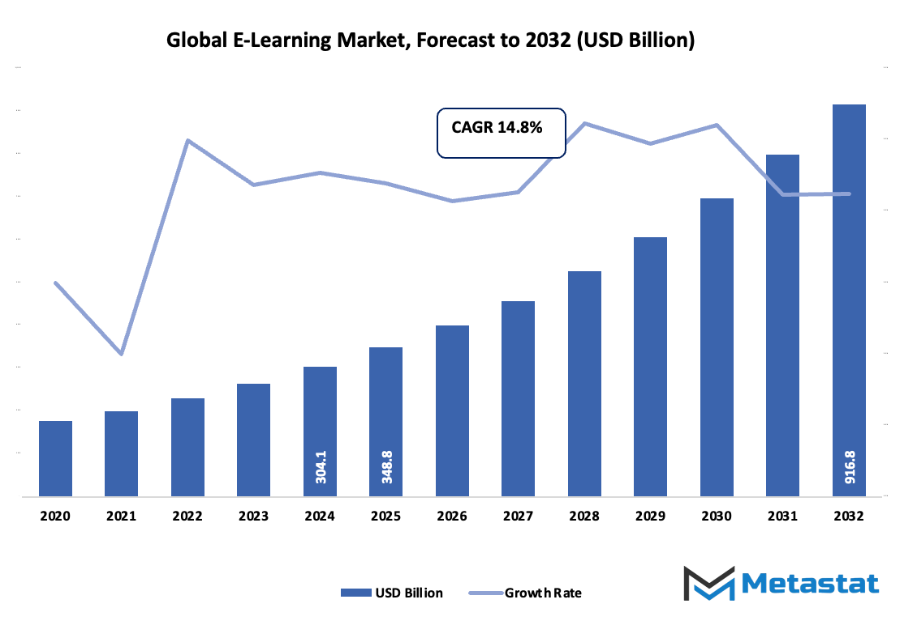
As computers and software improved, the market caught the eye of governments and corporations as cost-effective methods of training staff and engaging citizens. Learning management systems were the foundation of most institutions, building centralized platforms where learners could interact at their own rate.
The evolution of smart phones and cloud computing subsequently further opened doors from school walls so that the residents of rural communities could study in virtual classrooms and certificate programs with only a hand phone. This mobility brought about a cultural change learning no longer was geographically bound or time-bound. Consumer expectations also began to change. Consumers began to anticipate not only knowledge, but individualized, interactive experiences that replicated real-world problem-solving. Gamification, video instruction, and adaptive testing rose up to satisfy those demands, blending entertainment and learning.
Meanwhile, open-source systems and global collaborations allowed innovation without the previously high cost of brick-and-mortar institutions. Governments of nations started accrediting online degrees, and online learning became an accepted substitute for the brick-and-mortar degree. This adoption laid the ground for standard setting in quality assurance and data protection, two areas which had previously hindered mass adoption. The global e-learning industry today is a reflection of changing human behavior where curiosity and convenience converge, and learning accommodates technology. Forward, it will continue to integrate new forms of intelligence, data analysis, and virtual simulation, crafting experiences human in their digital nature. Its evolution from elementary correspondence courses to sophisticated web ecosystems is not only the revolution of education, but also the realignment of learning.
Market Segments
The global E-Learning market is mainly classified based on Provider, Type, Learning Type, End User.
By Provider is further segmented into:
- Content Provider: The global E-Learning market content providers create learning content, enhance courses online, and multimedia products that support education. Content providers of the companies have the job of creating quality, accessible, and interactive content to serve the needs of learners with diverse industries so that schools and companies can deliver successful online education programs.
- Service Provider: The global E-Learning market has service providers that offer technical solution and support for learning program provision and management. This comprises customization, platform maintenance, training support, and integration services. These providers facilitate efficient operation, customer satisfaction, and improved efficiency for institutions using learning tools online.
By Type the market is divided into:
- Student Management Systems (SMS): Student Management Systems in the global E-Learning market help institutions to manage students' information, track performance, and administrative processes. These systems automate enrollment, attendance, and grading activities, helping academic management become more efficient and streamlined for professors and administrators.
- Assessment Software: Test software within the market offers web-based tools to make online tests of learners' knowledge and understanding. It allows teachers to create quizzes, tests, and assignments while scores are automatically tallied with due assessment, feedback, and analysis of e-learning performance.
- Virtual Classroom Software: The market virtual classroom software enables online learning and real-time interaction among students and teachers. Virtual classroom software features screen sharing, virtual whiteboards, and chat capabilities, enabling collaboration and communication in virtual classrooms.
- Video conferencing: Video conferencing tools are among the top contenders in the market, facilitating real-time sessions and interactive sessions via remote locations. The tool is used by organizations and institutions to give lectures, meetings, and discussions, creating enthusiasm and engagement.
- Massive Open Online Courses (MOOC): Massive Open Online Courses play a pivotal role in the market by making education available to the masses. MOOCs offer affordable, flexible learning options that span vast amounts of subject matter, enabling global learners to acquire knowledge and skills on their own schedule.
- Learning Management Systems (LMS): Learning Management Systems in the market are centralized solutions for creating, distributing, and monitoring learning material. LMS solutions help organizations and schools efficiently manage training programs through providing tracking of progress and course organization.
- Online Tutoring Platforms: The market websites for online tutoring allow students to connect with experienced teachers for one-on-one instruction. These sites offer adaptive scheduling, immediate feedback, and topic-specialized instruction, allowing learning to become easier and more rewarding for students of any grade level.
- Other: The global E-Learning market solutions incorporate new technologies and blended platforms that cater to various learning demands. They provide alternative electronic solutions blended together to foster more flexibility, interaction, and accessibility in various learning and working environments.
By Learning Type the market is further divided into:
- Computer Managed Learning (CML): Computer Managed Learning in the global E-Learning market uses computer systems to plan, deliver, and assess learning activities. It supports educators in monitoring student performance and progress while automating administrative and instructional tasks.
- Computer Assisted Instruction (CAI): Computer Assisted Instruction plays an essential role in the market by integrating interactive software for teaching specific subjects. It enhances understanding through simulations, practice exercises, and instant feedback, improving overall learning outcomes.
- Synchronous Online Learning: Synchronous Online Learning in the market involves live sessions where participants engage simultaneously. This approach encourages direct interaction between instructors and learners, promoting collaboration and immediate feedback during lessons.
- Asynchronous Online Learning: Asynchronous Online Learning within the market allows learners to access materials and complete tasks at their own convenience. This flexible format supports self-paced study, making education more adaptable to different schedules and learning preferences.
- Adaptive e-Learning: Adaptive e-Learning in the market personalizes learning experiences based on individual performance and needs. Through data analysis and artificial intelligence, adaptive systems adjust content difficulty and recommendations to optimize learning efficiency.
- Interactive Online Learning: Interactive Online Learning in the market emphasizes engagement through activities like quizzes, group discussions, and simulations. This approach enhances participation and knowledge retention, creating a more dynamic online learning experience.
- Individual Online Learning: Individual Online Learning in the market focuses on self-directed education, allowing learners to study independently. This method supports personal growth and flexibility, giving learners control over pace and content selection.
- Other: Other learning types in the global E-Learning market include blended and mobile learning formats. These approaches integrate multiple methods and technologies, ensuring accessibility, convenience, and improved engagement for diverse learners.
By End User the global E-Learning market is divided as:
- Individuals: Individuals in the global E-Learning market pursue online education for personal development, skill enhancement, or career advancement. Digital platforms offer flexible access to courses, making learning possible anytime and anywhere without traditional constraints.
- Educational Institutions: Educational institutions are major participants in the market, adopting digital tools to expand learning opportunities. Online platforms support remote teaching, digital classrooms, and blended education, enhancing both accessibility and instructional quality.
- Corporations and Businesses: Corporations and businesses rely on the market for employee training and professional development. Digital learning solutions enable companies to deliver consistent training programs efficiently, promoting workforce skill growth and productivity improvement.
- Government Organizations: Government organizations use the global E-Learning market to train employees, spread awareness, and support educational initiatives. These programs enhance knowledge sharing, improve skill levels, and ensure effective learning across various public sectors.
|
Forecast Period |
2025-2032 |
|
Market Size in 2025 |
$348.8 Billion |
|
Market Size by 2032 |
$916.8 Billion |
|
Growth Rate from 2025 to 2032 |
14.8% |
|
Base Year |
2024 |
|
Regions Covered |
North America, Europe, Asia-Pacific, South America, Middle East & Africa |
By Region:
- Based on geography, the global E-Learning market is divided into North America, Europe, Asia-Pacific, South America, and the Middle East & Africa.
- North America is further divided into the U.S., Canada, and Mexico, whereas Europe consists of the UK, Germany, France, Italy, and the Rest of Europe.
- Asia-Pacific is segmented into India, China, Japan, South Korea, and the Rest of Asia-Pacific.
- The South America region includes Brazil, Argentina, and the Rest of South America, while the Middle East & Africa is categorized into GCC Countries, Egypt, South Africa, and the Rest of the Middle East & Africa.
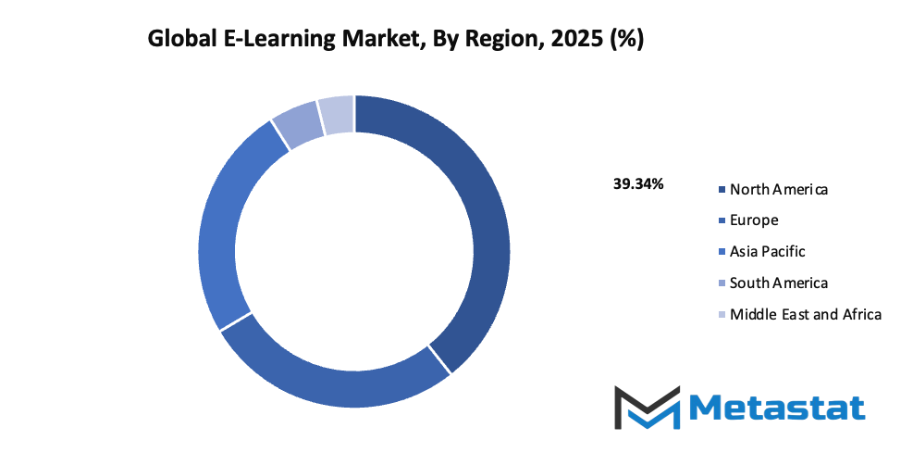
Growth Drivers
- Increasing Demand for Distance Education: The global E-Learning market benefits from the growing acceptance of distance learning programs. Students and professionals are seeking options that allow education alongside work or personal commitments. Educational institutions are responding by offering online courses and certifications, creating more opportunities for continuous learning and professional growth.
- Technological Advancements in Learning Platforms: Rapid development in technology supports the growth of the global E-Learning market. Tools such as virtual classrooms, artificial intelligence, and cloud-based systems have improved learning experiences by making them interactive and engaging. These innovations enhance accessibility, simplify content delivery, and help learners gain knowledge efficiently through personalized methods.
Challenges and Opportunities
- Limited Internet Connectivity in Rural Areas: The global E-Learning market is affected by poor internet access in remote locations. Learners in rural regions often face difficulties in accessing digital education platforms, leading to unequal learning opportunities. Improving network infrastructure and providing affordable internet solutions will help close this digital divide and support global learning expansion.
- Lack of Proper Infrastructure in Developing Regions: The market struggles in areas with limited technological resources. Many developing regions lack the equipment and systems needed to support online education. Establishing reliable electricity, digital tools, and training facilities can strengthen the foundation for successful implementation of E-Learning programs.
Opportunities
- Growing Adoption of Mobile Learning Solutions: The global E-Learning market is gaining momentum as mobile devices become essential learning tools. Smartphones and tablets provide easy access to educational apps and resources, enabling learners to study anytime and anywhere. This growing trend supports continuous learning and contributes to the overall progress of digital education worldwide.
Competitive Landscape & Strategic Insights
The global E-Learning market is moving toward a future shaped by innovation, accessibility, and adaptability. As education and training continue to transition into digital platforms, the market is witnessing strong participation from both long-established international corporations and dynamic regional companies. This mix has created an environment where competition drives improvement, pushing organizations to constantly refine learning experiences and technologies. The digital learning industry is not only about providing content but also about offering personalized, interactive, and data-driven education that meets the changing expectations of learners across the world.
Important competitors in the market include Aptara Inc., Articulate Global, LLC, Cisco Systems, Inc., Skillsoft, Adobe Inc., Pluralsight, D2L Corporation, Citrix Systems, Inc., Oracle Corporation, SAP, Apollo Education Group, Blackboard, Coursera, Udemy, 2U, Inc., Rosetta Stone, Udacity, Codecademy, FutureLearn, LinkedIn, Pearson Education, and Skillshare. Each of these organizations contributes to shaping the landscape through different approaches. For instance, some focus on corporate training and skill development, while others emphasize open-access education or language learning. Their shared goal remains the same making education more flexible, engaging, and available to a wider audience through technology.
The future of the e-learning industry will likely emphasize artificial intelligence, automation, and immersive technologies like virtual and augmented reality. These tools will help create learning environments that feel more natural and responsive to individual needs. Predictive analytics will guide learners through customized learning paths, ensuring that progress aligns with personal and professional goals. The combination of human expertise and advanced technology will make learning more adaptive, efficient, and measurable.
As connectivity improves globally, even regions with limited educational infrastructure will gain access to quality learning opportunities. Affordable mobile devices and faster internet connections will play a major role in this expansion. Regional competitors will continue to rise, bringing localized content and cultural relevance to learners who may not have had such resources before. This shift will encourage collaboration between international leaders and regional innovators, forming a more inclusive digital education system that benefits all participants.
Sustainability will also become an important focus. As institutions and companies adopt online learning, they will reduce the environmental impact associated with physical materials, travel, and traditional classroom infrastructure. At the same time, continuous technological upgrades will require careful management to maintain data security and ensure that digital platforms remain reliable and trustworthy.
Market size is forecast to rise from USD 348.8 Billion in 2025 to over USD 916.8 Billion by 2032. E-Learning will maintain dominance but face growing competition from emerging formats.
The overall direction of the global E-Learning market points toward a future where education is borderless and continuous. With the combined efforts of major companies and emerging players, the industry will keep evolving to meet global demands for knowledge, upskilling, and lifelong learning. The foundation being built today will define how education functions in the digital age accessible, efficient, and deeply connected to the needs of learners everywhere.
Report Coverage
This research report categorizes the global E-Learning market based on various segments and regions, forecasts revenue growth, and analyzes trends in each submarket. The report analyses the key growth drivers, opportunities, and challenges influencing the global E-Learning market. Recent market developments and competitive strategies such as expansion, type launch, development, partnership, merger, and acquisition have been included to draw the competitive landscape in the market. The report strategically identifies and profiles the key market players and analyses their core competencies in each sub-segment of the global E-Learning market.
E-Learning Market Key Segments:
By Provider
- Content Provider
- Service Provider
By Type
- Student Management Systems (SMS)
- Assessment Software
- Virtual Classroom Software
- Video Conferencing Software
- Massive Open Online Courses (MOOC)
- Learning Management Systems (LMS)
- Online Tutoring Platforms
- Other
By Learning Type
- Computer Managed Learning (CML)
- Computer Assisted Instruction (CAI)
- Synchronous Online Learning
- Asynchronous Online Learning
- Adaptive e-Learning
- Interactive Online Learning
- Individual Online Learning
- Other
By End User
- Individuals
- Educational Institutions
- Corporations and Businesses
- Government Organizations
Key Global E-Learning Industry Players
- Aptara Inc.
- Articulate Global, LLC
- Cisco Systems, Inc.
- Skillsoft
- Adobe Inc.
- Pluralsight
- D2L Corporation
- Citrix Systems, Inc
- Oracle Corporation
- SAP
- Apollo Education Group
- Blackboard
- Coursera
- Udemy
- 2U, Inc.
- Rosetta Stone
- Udacity
- Codecademy
- FutureLearn
- Pearson Education
- Skillshare
WHAT REPORT PROVIDES
- Full in-depth analysis of the parent Industry
- Important changes in market and its dynamics
- Segmentation details of the market
- Former, on-going, and projected market analysis in terms of volume and value
- Assessment of niche industry developments
- Market share analysis
- Key strategies of major players
- Emerging segments and regional growth potential



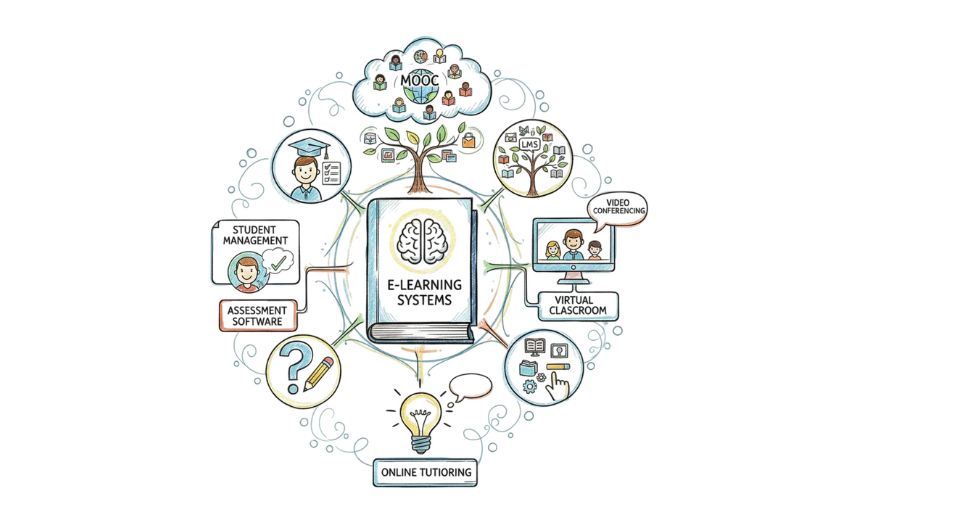
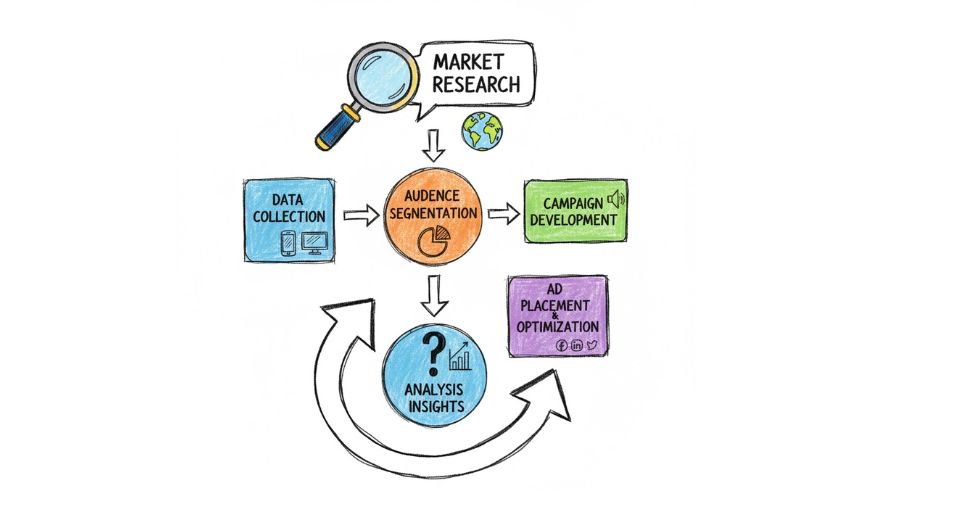
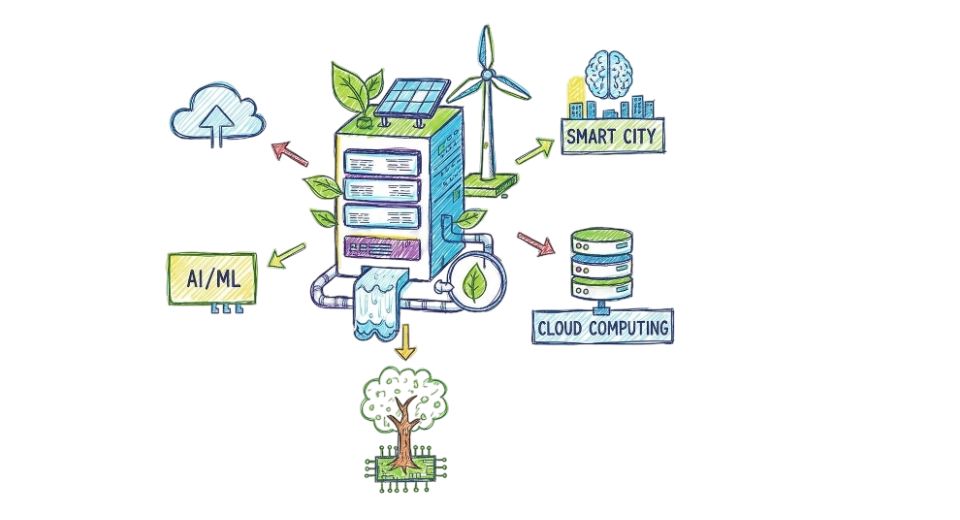
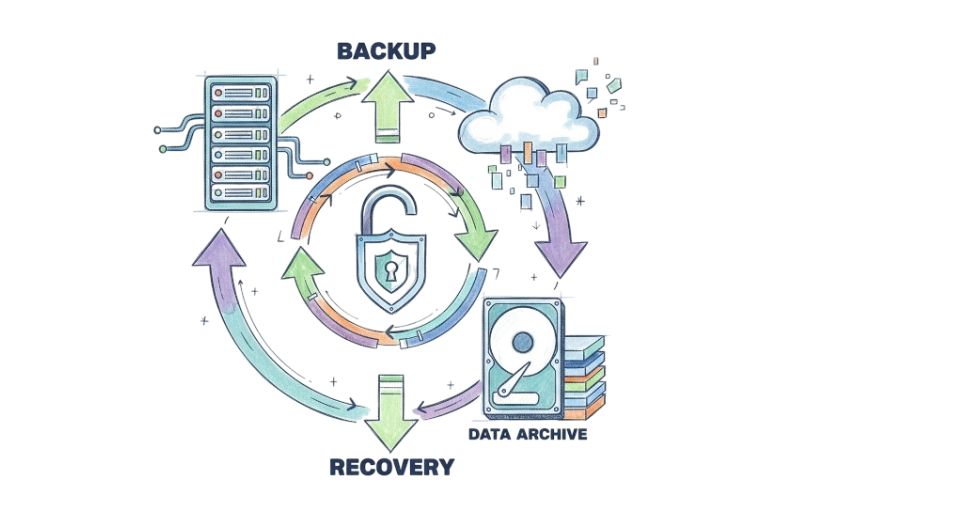

 US: +1 3023308252
US: +1 3023308252






